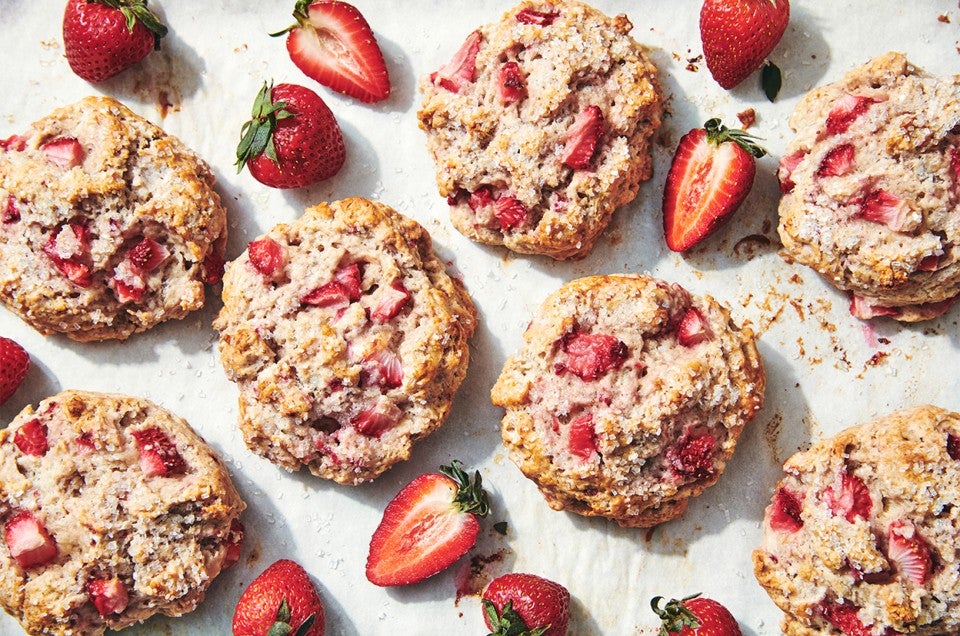


You’re bringing your favorite cream tea scones to an office breakfast, and you’d like to jazz them up a bit. Or maybe blackberries are on sale and you’re wondering what to bake with them. The good news? Adding fresh fruit to scones makes delicious sense.
But it’s not as simple as just tossing fruit into your bowl of dough. Without thoughtful adjustments, you may end up with fruit that’s sunken, distributed unevenly, or resting in gooey pockets in your otherwise flaky, tender scones. So what’s the best way to add fresh fruit to scones?
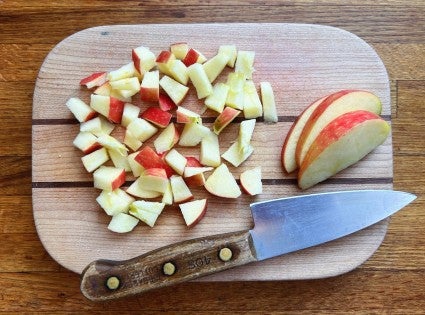
The firmer the fruit, the better your results will be; excessive juice is the enemy of your scones’ texture, as it can make your wonderfully moist, crumbly scones soggy, gummy, and dense. Apples and pears are clearly at one end of the firmness scale, while fragile raspberries and juicy strawberries are at the other, with fruits like peaches, bananas, pineapple, plums, and blueberries in between.
Firm fruits can be diced and stirred directly into your scones’ dry ingredients. If dicing, aim for cubes a bit smaller than 1/2". If their skin is edible, it’s fine to leave it on.
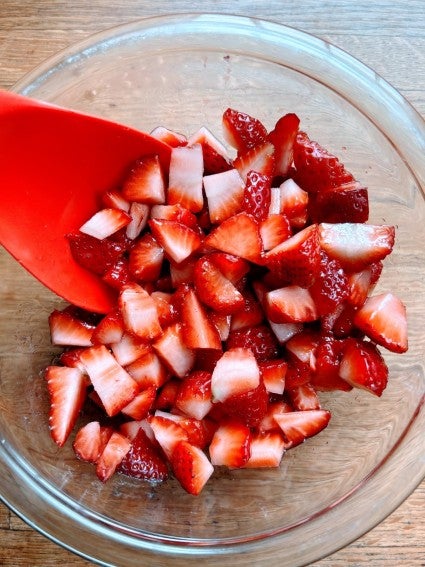
For juicier fruits, you need to eliminate some of their liquid before you add them to scone dough; otherwise, that extra moisture will create gummy pockets in your scones. An easy solution is to macerate the fruit with sugar: Toss cut fruit with 1 to 2 tablespoons of sugar, then let rest for an hour or so, stirring occasionally. Since sugar is hygroscopic (it attracts water), the fruit will naturally relinquish some of its juice. Drain and save the liquid; it can be combined with confectioners’ sugar to make a complementary glaze.
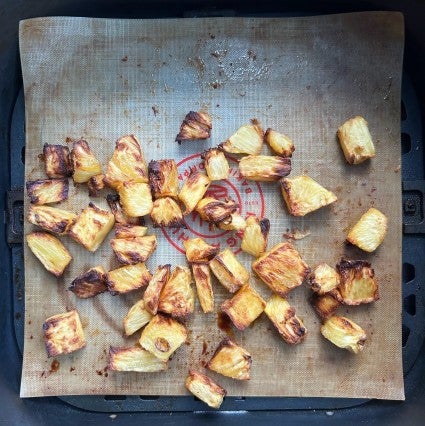
For even better results, try roasting diced fruit or berries until they’ve exuded a lot of their juice and become “jammy” in texture. Bonus: Roasting intensifies fruits’ flavor. An air fryer is an easy solution here. Or see how to oven-roast fruit: Grilling and roasting fruit for baking. Just be sure to cool fruit completely before using in your scone recipe: Cooled fruit is more stable (less likely to fall apart) and will prevent any butter in the dough from softening, which could affect your scones’ wonderfully flaky texture.
For best results, it’s best to limit the amount of fruit to about 50% of the amount of flour in the recipe, by volume. For example, if your favorite scone recipe calls for 2 cups of flour, use a maximum of 1 cup of berries or diced fruit (fresh, macerated, or roasted). If you’ve roasted or macerated the fruit, measure it after preparing, just before adding to the dough.
If you’ve washed your fruit, make sure it’s completely dry; you don’t want to add any more liquid to the dough than the fruit already contains.
Mix all the dry ingredients thoroughly and cut in the butter (if your recipe calls for that step).
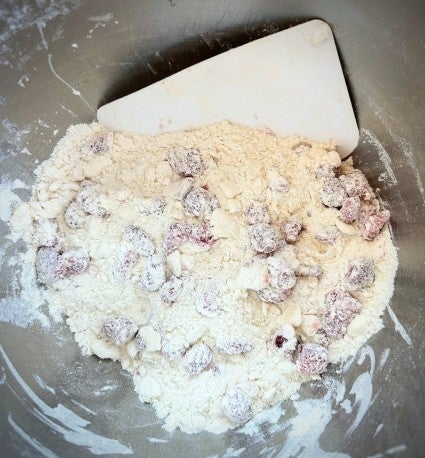
Carefully mix the fruit into the dry ingredients, stirring until it’s as evenly distributed as possible. You may want to use your hands here, rather than a spoon or your mixer, to avoid crushing any fragile fruit.
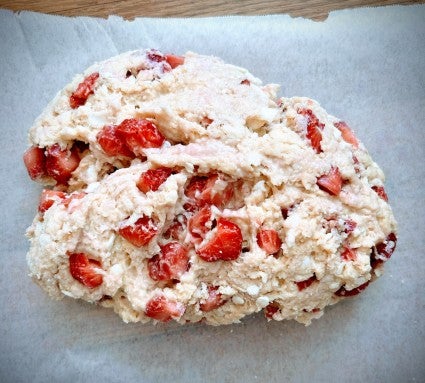
Mix liquids together (whisked eggs, cream or milk, vanilla, etc.), and add all at once. Use a bowl scraper or Danish dough whisk to gently and thoroughly moisten the dry ingredients and bring everything together into a cohesive dough, being careful not to overwork.
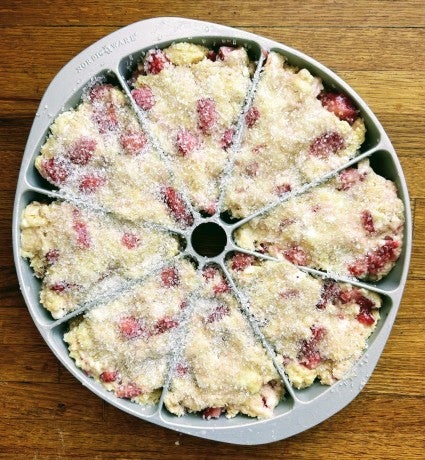
If the dough is soft and scoopable, use a Scone and Muffin Scoop to plop it in mounds onto a greased or parchment-lined baking sheet. If the dough is stiffer, shape it according to your recipe’s instructions, or press it into a scone pan.
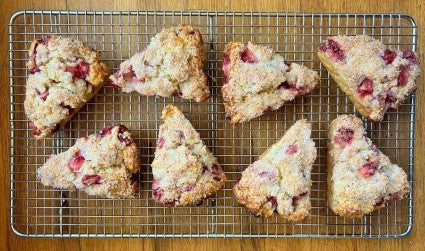
Bake scones as directed. And enjoy them fresh from the oven, when possible: If the fruit has oozed a bit too much, the scones will be more delicious warm than cold.
Want fresh fruit flavor without the potential pitfalls of chopped fruit or berries? If you don’t mind a color change in your scones, try puréeing fresh fruit and substituting it for some of the liquid in your recipe: This recipe for Strawberries & Cream Scones is a good example.
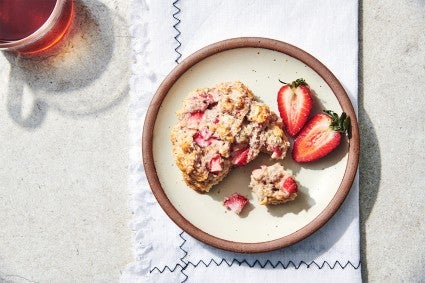
Color outside the lines: Try Fuyu persimmon, kiwi fruit, starfruit, firm honeydew melon, “Foster” bananas (diced and roasted), or another fruit beyond the usuals. You may discover your new favorite fruit scone!
And what about using frozen fruit, rather than fresh? You'll want to thaw the fruit first, then pat it dry; for details, see Frozen fruit vs. fresh fruit in baking.
Uh-oh, did you wait too long to bake with your fruit, and now it’s beyond its peak? See how to use sad-looking fruit in bars, cake, frosting, and more.
Cover photo (Strawberries & Cream Scones) by Liz Neily.


